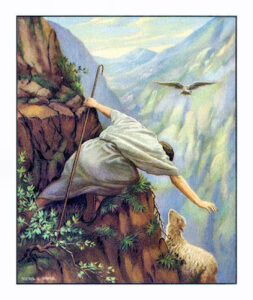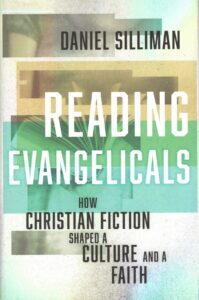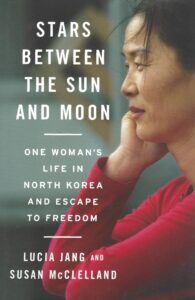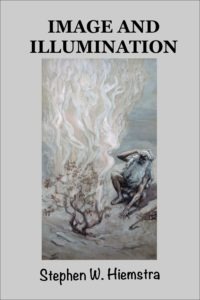Stephen W. Hiemstra's Blog, page 80
September 25, 2022
Good Shepherd Prayer

By Stephen W. Hiemstra
Father God,
All praise and honor, power and dominion, truth and justice are yours because you created us and have rescued us like a Good Shepherd in spite of our foolish wandering from your image and word.
Forgive our wanton behavior, our directionless lives, and willful sinning when you have provided for all our needs, both physical and spiritual.
Thank you for the life, death, and resurrection of Jesus, the teaching of his parables, and the guidance of the church, founded and provisioned by the Holy Spirit.
Through the power of the Holy Spirit, draw us to yourself. Open our hearts, illumine our minds, and strengthen our hands in your service.
In Jesus’ precious name, Amen.
Good Shepherd Prayer
Also see:
The Face of God in the Parables
The Who Question
Preface to a Life in Tension
Other ways to engage online:
Author site: http://www.StephenWHiemstra.net
Publisher site: http://www.T2Pneuma.com
Newsletter at: https://bit.ly/Enter_22, Signup
The post Good Shepherd Prayer appeared first on T2Pneuma.net.
September 23, 2022
The Face of God

What man of you, having a hundred sheep, if he has lost one of them,
does not leave the ninety-nine in the open country,
and go after the one that is lost, until he finds it?
(Luke 15:4)
By Stephen W. Hiemstr
The Lost Sheep (1898), a painting by Alfred Usher Soord (1868-1915), captured the enthusiasm of the great missionary movement of the late nineteenth century. The painting pictures a shepherd hanging off a cliff to rescue a lost sheep stuck on a limb in imminent danger of either falling to its death or being eaten alive by a circling eagle.
This painting tells a story and draws us in. But what is the story that this picture tells? Even though we cannot see the face of the shepherd in Soord’s painting, we immediately intuit that he is an honorable, trustworthy, and courageous man, someone devoted to his flock. Yet, we do not know his ethnicity, his religion, or even his age. Still, we want to emulate this shepherd as a role model.
For the believer, this painting evokes the image of an activist God who takes great risks to rescue sinners from impending death. We know this shepherd image from Psalm 23:1, which begins: “The Lord is my shepherd; I shall not want.” Jesus himself called on this image in John 10:14: “I am the good shepherd. I know my own and my own know me.” This image is poignant because we have more experience with bad shepherds than with good ones (Ezek 34).
Digging deeper into John 10, the story Jesus told may not be the one heard by modern and postmodern Christians. Jesus heals a blind man during the feast of Tabernacles (John 7:1), while the shepherd discussion takes place during the feast of Dedication (John 10:22), which like Hanukkah commemorates the re-dedication of the temple by Judas Maccabees in 165 BC. The Maccabees led a rebellion against the Hellenization of Israel and the desecration of the temple by Antiochus Epiphanies—a very bad shepherd! While today John 10 is typically read along with Psalm 23 (good shepherds), the context suggests that Ezekiel 34 (bad shepherds) is a better sermon text.
For the unbeliever, bad shepherds like Antiochus Epiphanies would be a more common experience than good shepherds and would clearly not be hanging off cliffs for lost sheep. In preparing to paint, Soord clearly read Ezekiel 34:45-6: “My sheep were scattered; they wandered over all the mountains and on every high hill.“ Unbelievers almost certainly would not see the allegory so obvious to most believers.
This is not a painting that leaves the viewer without an emotional response. Even a materialist might recognize the magnetism of this art. A cynic might scoff at the idea of the shepherd’s divine symbolism; a feminist might write it off the story because the shepherd is male. A first-century Jerusalem resident might easily have seen the shepherd as a shady figure—a poor, smelly beggar or thief—not a Sunday icon. A nonbeliever might reject the analogy obvious to believers as naive and work hard to come up with alternative narratives.
The point here is that Soord’s painting, like the parable itself, forces the viewer to accept or reject the theme of the painting. Jesus himself says: “This is why I speak to them in parables, because seeing they do not see, and hearing they do not hear, nor do they understand.” (Matt 13:13) The parable (and the painting) bring us into the presence of God and confront us with a decision of faith. Our hearts are either willing or not.
When Moses asked to see God’s face, God cautioned him to look only at the tail of his robe as he passed by. God then said: “The Lord, the Lord, a God merciful and gracious, slow to anger, and abounding in steadfast love and faithfulness.” (Exod 34:6) God’s face in the Old Testament was veiled, elusive, and seeing only God’s robe, Moses’ face began to glow (Exod 34:29). It is only in the person of Jesus and through his parables that we get a fuller picture.
The Face of God
Also see:
The Face of God in the Parables
The Who Question
Preface to a Life in Tension
Other ways to engage online:
Author site: http://www.StephenWHiemstra.net
Publisher site: http://www.T2Pneuma.com
Newsletter at: https://bit.ly/Enter_22, Signup
The post The Face of God appeared first on T2Pneuma.net.
September 20, 2022
Silliman Chronicles the Rise of Christian Fiction

Daniel Silliman. 2021. Reading Evangelicals: How Christian Fiction Shaped a Culture and a Faith. Grand Rapids: Eerdmans.
Review by Stephen W. Hiemstra
The definition of an evangelical has been the focus of much discussion over time. The Latin translation of evangelium is simply Gospel, which hints at evangelical focus on evangelism. Protestants were historically described as evangelicals. Others have defined evangelicals as anyone who likes evangelist Billy Graham. For me, evangelicals responded to the Enlightenment by focusing on the inerrancy of scripture and personal holiness while liberals (or progressives) responded by rejecting miracles and focusing on social ministry
For Daniel Silliman in his book, Reading Evangelicals: How Christian Fiction Shaped a Culture and a Faith, an updated definition of an evangelical might be: “People who shop at Christian bookstores.” Following Jürgen Habermas, this implies that the evangelical bookstore has served, at least for a season, as the relevant “discourse community” for evangelicals. (8)
IntroductionSillman selected:
“Five novels published over four decades. Love Comes Softly came out in 1979; This Present Darkness, 1986; Left Behind,1995 and The Shunning,1998; and The Shack, 2008. Each of these books has sold more than a million copies. Each has marked a change in the history of publishing and a community, and each invites the reader into a conversation and a community.” (11-12)
Sillman writes about how these books were written, published, sold, and read describing these events as a sociologist. While these events shaped evangelicalism in the last quarter of the twentieth century and first decade of the twenty first century, clearly the demise of Christian bookstores in more recent years speaks to the passing of an era (12).
Background and OverviewDaniel Silliman has been the news editor for Christianity Today since 2019 and
teaches humanities at Milligan University. His masters is from Tübingen University and doctorate from Heidelberg University, both in Germany.
Silliman writes in five chapters preceded by acknowledgments and an introduction, and followed by a conclusion, notes, and an index:
The Romance of Abundant LifeSpiritual Warfare in Everyday AmericaThe Rapture DilemmaAuthenticity in Amish BonnetsAmid Emerging Ambiguities (v)The German connection to this work makes perfect sense to me, although it may come as a surprise to others. When I did research on the feed manufacturing industry in Spain during my government years, I found that my German colleagues at Göttingen University were better informed on Spanish industry than my colleagues in Spain. German scholarship remains second to none.
Let me say a few words about Silliman’s first chapter and the book it investigates.
Love Comes Softly by Janette OkeBefore Janette Oke’s Love Comes Softly (1977) we had classic fiction with its Christ figures, but no Christian fiction per se. Oke created a new genre (Christian prairie romance) within a new genre (Christian fiction). Oke had trouble breaking this new ground, but eventually found a home with Carol Johnson, one of the few female editors anywhere but then at Bethany House. (49)
Silliman summarizes her theme as: “God wanted people to flourish in their everyday lives and that they could live their best lives if they would submit and accept God’s love.” (13) If faith could be autonomous on an isolated farm out on the prairie, then self-sufficiency could be extended into all aspects of life. This concept of flourishing easily morphed into a political focus on family values, which also came later, but the concept here is highly individualistic (34). Participation in a church community is not in view here, reinforcing narcistic and ethnocentric tendencies that also came later (220).
In the business of book sales, stores selling Christian fiction suddenly had a product not aligned with particular denominations, which previously dominated the Christian publishing industry. This and other factors helped the Christian bookstores take off in the years to follow. The core constituency was white, suburban women who were not so isolated as prairie women, but who were only starting to enter the workforce in 1977.
AssessmentDaniel Silliman’s Reading Evangelicals: How Christian Fiction Shaped a Culture and a Faith provides a masterful investigation of the social and political context that led to the growth and later decline of Christian fiction and evangelical discourse. Publishers may benefit from his analysis of their business. Authors will appreciate his outlining the themes and constituencies of the various genres of Christian fiction that he reviews. Others will just love the stories that he tells.
Footnoteshttp://www.danielsilliman.org.
Silliman Chronicles the Rise of Christian FictionAlso see:Books, Films, and MinistryOther ways to engage online:Author site: http://www.StephenWHiemstra.netPublisher site: http://www.T2Pneuma.com Newsletter at: https://bit.ly/Enter_22, SignupThe post Silliman Chronicles the Rise of Christian Fiction appeared first on T2Pneuma.net.
September 19, 2022
Parables: Monday Monologues (podcast), September 19, 2022

By Stephen W. Hiemstra
This morning I will share a prayer and reflect on the Parables of Jesus. After listening, please click here to take a brief listener survey (10 questions).
To listen, click on this link.
Hear the words; Walk the steps; Experience the joy!
Parables: Monday Monologues (podcast), September 19, 2022
Also see:
Monday Monologue On March 26, 2018
Other ways to engage online:
Author site: http://www.StephenWHiemstra.net,
Publisher site: http://www.T2Pneuma.com.
Newsletter at: https://bit.ly/Enter_22, Signup
The post Parables: Monday Monologues (podcast), September 19, 2022 appeared first on T2Pneuma.net.
September 18, 2022
Parable Prayer

By Stephen W. Hiemstra
God of all Mercy,
All praise and honor, power and dominion, truth, and justice are yours because you created us in your image, male and female, and ransomed us through the life, death, and resurrection of Jesus Christ.
We confess that there is no law that we have not broken in spirit and in truth, nor have we loved you will all of our hearts and minds, nor have we loved our neighbor. We are shattered images undeserving of your love and attention.
Thank you for your love, both unconditioned and conditioned, better than our own mothers and fathers have loved us, in spite of our rebellious nature and broken faith.
In the power of your Holy Spirit, break every chain with which Satan binds us, be it traumatic pain, unpius griefs, blistering illnesses, or soul-crushing addictions. Come in our hearts and cleanse us of all such sin, transgressions, and iniquities that we might be whole again. Give us hearts and minds for you alone, and Christian friends and a faithful church to aid us in life’s journey.
In Jesus’ precious name, Amen.
Parable Prayer
Also see:
The Who Question
Preface to a Life in Tension
Other ways to engage online:
Author site: http://www.StephenWHiemstra.net
Publisher site: http://www.T2Pneuma.com
Newsletter at: https://bit.ly/Enter_22, Signup
The post Parable Prayer appeared first on T2Pneuma.net.
September 16, 2022
The Face of God in the Parables
 The LORD passed before him and proclaimed,
The LORD passed before him and proclaimed,
The LORD, the LORD, a God merciful and gracious, slow to anger,
and abounding in steadfast love and faithfulness.
(Exod. 34:6)
By Stephen W. Hiemstra
The image of God in the New Testament takes three forms: The person of Jesus, Jesus’ teaching about the kingdom of God with the parables, and the founding of the church on Pentecost by the Holy Spirit. This is a trinitarian revelation of God, not by words, but by action. Here I will focus on the image of God the Father found in the parables.
The authenticity of the parables as Jesus’ own words are seldom questioned, in part, because Jesus’ parables are unique, a genre unto themselves. The parables invite the hearer to participate in the story and require a response to the call to faith, many times without explicitly mentioning God.
Circumlocutions
Explicit in some parables and implicit in others are the words: The kingdom of God is like… Because the covenantal name of God, YHWH, is sacred in Jewish thought, the Bible uses numerous circumlocutions—indirect references—for God’s name. The most common circumlocution is Lord, which in Hebrew is Adoni. Another common circumlocution is The Name, which in Hebrew is Shema. Deuteronomy 6:4-9, which begins the Jewish daily prayer, is also called: The Shema.
Indirect speech, like poetry, is most common in repressive societies. Jesus began speaking in parables after the Pharisees began to plot against him (Matt 12-13). In this sense, a parable is an elegant form of circumlocution.
New Testament references to the Kingdom of God (Mark, Luke) or the Kingdom of Heaven (Matthew) are circumlocutions for the name of God. Almost all of Jesus’ parables refer to the kingdom of God, while rabbinic parables typically elucidate a passage of scripture (Blomberg 2012, 77).
God’s Self-Revelation
Because we are created in the image of God (Gen 1:27), it is important that we understand what God’s image implies. After the second giving of the Ten Commandments, Moses is given a description in Exodus 34:6, cited above, of who God is that is repeated throughout the Old Testament (Ps 86:15, 103:8; Joel 2:13; and Jonah 4:2).
This latter reference is interesting because Jesus described his mission in these words: “For as Jonah became a sign to the people of Nineveh, so will the Son of Man be to this generation.” (Luke 11:30) If Jesus knew the story of Jonah, he most clearly knew Exodus 34:6 because Jonah’s reason for running away from Nineveh hinged on it: “That is why I made haste to flee to Tarshish; for I knew that you are a gracious God and merciful, slow to anger and abounding in steadfast love, and relenting from disaster.” (Jonah 4:2). Jonah hated the Ninevites and refused to preach God’s forgiveness them because he knew God would forgive them if they repented of their sin.
These five characteristics of God—mercy, grace, patience, love, and faithfulness—therefore provide a powerful classification for Jesus’parables. A sixth classification—the response and characteristics of disciples—provides another obvious classification for many parables.
Jesus’ Authority
Why is Jesus an authority on the image of God? Christ’s death on the cross and resurrection credential his link to God as the author of our faith (1 Cor 15:20-28; Heb 12:2). In fact, because the New Testament was written after the Christ’s death and resurrection, every sentence in the New Testament should be read as if pre-pended with the words: Because Christ rose from the dead, therefore…
The parables of Jesus therefore read as if penned by God himself, something worthy of further study.
The Face of God in the Parables
Also see:
The Who Question
Preface to a Life in Tension
Other ways to engage online:
Author site: http://www.StephenWHiemstra.net
Publisher site: http://www.T2Pneuma.com
Newsletter at: https://bit.ly/Enter_22, Signup
The post The Face of God in the Parables appeared first on T2Pneuma.net.
September 13, 2022
Lucia Escaped NK

Lucia Jang and Susan McClelland. 2014. Stars between the Sun and Moon: One Woman’s Life in North Korea and Escape to Freedom. New York: W.W. Norton & Company.
Review by Stephen W. Hiemstra
Reality is so much more interesting than fiction. How people cope with adversity stretches the imagination, which allows the observer to enter the story and experience it firsthand. There is no safety net in knowing that the hero pulls though miraculously avoiding terrible loss or pain. Reality allows none of that. The pain and loss is real and it leaves a blood signature.
Lucia Jang with the help of Susan McClelland writes in her memoir—Stars between the Sun and Moon: One Woman’s Life in North Korea and Escape to Freedom—of her life in North Korea and her several escapes into China and beyond.
FamineFamine shaped Lucia’s daily life in North Korea. Hungry people obsess about food. In just about every paragraph, Lucia describes what she ate and how much. Your choice of occupation, your stage in life, your family status, all influenced your expected rations in communist North Korea. In a place plagued by chronic famine, one’s wealth, social status, and life expectancy can all be read just by looking at you.
Hunger is a theme throughout Lucia’s experience growing up in and around the City of Yuseon. This city lies along the border of North Korea’s Hamgyong province along the Tumen River across from China. Lucia writes about experiences during the tenures of Kim Il-sung (1912-1994) and his son, Kim Jong-il (1942-2011).
Famine is still a problem in North Korea. Dead fishermen still wash up on Japanese shores (ghost ships after 2017) when inadequate equipment fails in the Sea of Japan and they starve at sea. Only this week, there was the story of an elderly man being discharged from prison in North Korea only to find his family unwilling to receive him back, arguing that they could not feed him (Un 2022). His crime? His daughter escaped to South Korea and sent him money.
Consequently, Lucia’s memoir refers to life in North Korea at least a decade ago, not overlapping the tenure of Kim Jong-un, who assumed leadership with his father’s death in 2011. Yet, the circumstances described remain an economic reality.
Griefs and Shame AboundThe legacy of hunger and the poverty it brings touched all aspects of Lucia’s life. Because the official ration amounted to only three hundred grams (about two-thirds of a pound) of food, people traded their possessions for additional food and engaged in illegal trades to earn additional money. This left virtually everyone liable for arrest and imprisonment.
Lucia was raped by a young man who got her pregnant. After that she was forced to marry him. She later learned that his primary motivation for marriage was to gain the bride price to pay old debts. Unable to feed everyone, her own parents sold her second child, a boy, to a wealthy family for three hundred won (about a quarter of a dollar) and two bars of soap.
Lucia later escaped to China, where she was sold as a bride to a Chinese man. Such marriages were not recognized by the Chinese government and she was later repatriated to North Korea and imprisoned.
AssessmentLucia Jang’s memoir, Stars between the Sun and Moon, written with the help of Susan McClelland is the story of a woman’s determination to survive under much adversity. Lucia writes to her son, Taebum, who she refused to abort and smuggled out of China. I cried through much of this book.
ReferencesUn, Lee Chae. 2022. Elderly man in N. Hamgyong Province returns to labor brigade after being refused entry at home. Daily NK. Online: https://www.dailynk.com/english/elder.... Access: 26 April 2022. Dated: 2022.04.22.
Lucia Escaped NKAlso see:Books, Films, and MinistryOther ways to engage online:Author site: http://www.StephenWHiemstra.netPublisher site: http://www.T2Pneuma.com Newsletter at: https://bit.ly/trans_22, Signup
The post Lucia Escaped NK appeared first on T2Pneuma.net.
September 12, 2022
Love: Monday Monologues (podcast), September 12, 2022

By Stephen W. Hiemstra
This morning I will share a prayer and reflect on Unconditional Love. After listening, please click here to take a brief listener survey (10 questions).
To listen, click on this link.
Hear the words; Walk the steps; Experience the joy!
Love: Monday Monologues (podcast), September 12, 2022
Also see:
Monday Monologue On March 26, 2018
Other ways to engage online:
Author site: http://www.StephenWHiemstra.net,
Publisher site: http://www.T2Pneuma.com.
Newsletter at: https://bit.ly/trans_22, Signup
The post Love: Monday Monologues (podcast), September 12, 2022 appeared first on T2Pneuma.net.
September 11, 2022
Prayer of Love

By Stephen W. Hiemstra
Heavenly Father,
All praise and honor, power and dominion, truth and justice are yours because you created us for family life and have given us both unconditional and conditional love for our benefit.
Forgive us when we obsess about our need for unconditional love and rebel against conditional love. We confess that we have not always listened to and respected our fathers and mothers as we should.
Thank you for gift of life and your overwhelming love. Teach us to share your love with those around us.
In the power of your Holy Spirit, draw us to yourself. Give us ears to hear and eyes to see that we might find balance for healthy living.
In Jesus’ precious name, Amen.
Prayer of Love
Also see:
The Who Question
Preface to a Life in Tension
Other ways to engage online:
Author site: http://www.StephenWHiemstra.net
Publisher site: http://www.T2Pneuma.com
Newsletter at: https://bit.ly/trans_22, Signup
The post Prayer of Love appeared first on T2Pneuma.net.
September 9, 2022
Obsessing about Unconditional Love

You shall have no other gods before me.
You shall not make for yourself a carved image,
or any likeness of anything that is in heaven above,
or that is in the earth beneath,
or that is in the water under the earth.
(Exod 20:3-4)
By Stephen W. Hiemstra
Obsessing about unconditional love—a unique form of idolatry—has become the besetting sin of our time.
Unconditional love is love without conditions. We normally think of motherly love as unconditional and we yearn for it. By contrast, fatherly love has conditions and we chide at the thought. Normally, these two types of love are in balance; when they are unbalanced, so are we. Think of a compass that has lost its magnetism and no longer points north—the damage caused by a broken compass is particularly severe at night or in the midst of a storm.
In the Ozzie and Harriet1 world that I grew up in, Mom never disciplined us. Her big stick was: You just wait until your father gets home. Mom tolerated our behavior; Dad did not. In today’s world where everyone works, the thing missing is the time and patience for mothers to offer motherly love. Our preference for unconditional love may arise because of its rarity. The consequence is a generation beset with anxiety and depression that arise from not feeling worthy of love.
Theologically, our obsession with unconditional love shows up as a focus on consolation and general impatience with calls for transformation (Rom 12:1-2). In Jesus’ words to the woman caught in adultery—“Neither do I condemn you; go, and from now on sin no more” (John 8:11)—we focus on the first statement (“neither do I condemn you”) and gloss over the second (“from now on sin no more”). It’s like the therapy patient who looks for a therapist who allows them catharsis, but rejects an exploration of personal issues or advice on how to deal with them. Following this line of thinking, a good sermon provides insightful theological reflection, but falls short on application. By contrast, Jesus’ direction to the woman balances unconditional and conditional love.
The dark side of unconditional love arises when it violates the second commandment and becomes idolatrous. Examples of this dark side are everywhere:
Puppies and kiddies are idolized as offering unconditional love. Once pets were primarily the providence of children. Now, photographs of puppies and kiddies have replaced baby pictures online as fertility rates in the United States have crashed.
Porn substitutes for meaningful relationships and demands nothing in return. Pornography is being mainstreamed in society to the point that adult-content magazines are no longer financially viable.
Like Peter Pan, we want to remain adolescents forever and treat adult behavior—adulting—as optional. Our unwillingness to accept the responsibilities inherent in traditional relationships may be exacerbating things like drug use and gender confusion.
Measured against the unrealistic standards of unconditional love, real relationships falter.
While an obsession with unconditional love may reflect inadequate motherly love, it also suggests the absence of fatherly love—conditional love. This is likely the source of many authority issues. Are mass shootings an example of an adolescent lashing out? If our relationship with our fathers is deficient because our father was absent or overbearing, our relationship with other authorities in life may reflect this deficiency. Fathers teach us to deal with our issues, manage conflict, and manage our boundaries, especially with those in authority.
Theologically, Jesus taught us to pray to God as our heavenly father. The giving of the law on Mount Sinai set forth boundaries, the Ten Commandments, that the Nation of Israel to live by. Referring to God as father is not so much a statement of his gender as it is a statement of his authority. God’s love is unconditional in the sense that he created us but it is conditional in requiring obedience to the law (Old Testament) and requiring faith (New Testament), both of which are primarily for our benefit.
If everyone engaged in boundary-free living, life in the community would be impossibly difficult. Fatherly love is necessary for communal life.
The current thirst for unconditional love is unsatiable. It simply speaks to a problem of balance between unconditioned and conditional love. The good news is that in the triune God we have an example of balance.
Footnotes
1 https://en.wikipedia.org/wiki/The_Adv....
Obsessing about Unconditional Love
Also see:
The Who Question
Preface to a Life in Tension
Other ways to engage online:
Author site: http://www.StephenWHiemstra.net
Publisher site: http://www.T2Pneuma.com
Newsletter at: https://bit.ly/trans_22, Signup
The post Obsessing about Unconditional Love appeared first on T2Pneuma.net.



